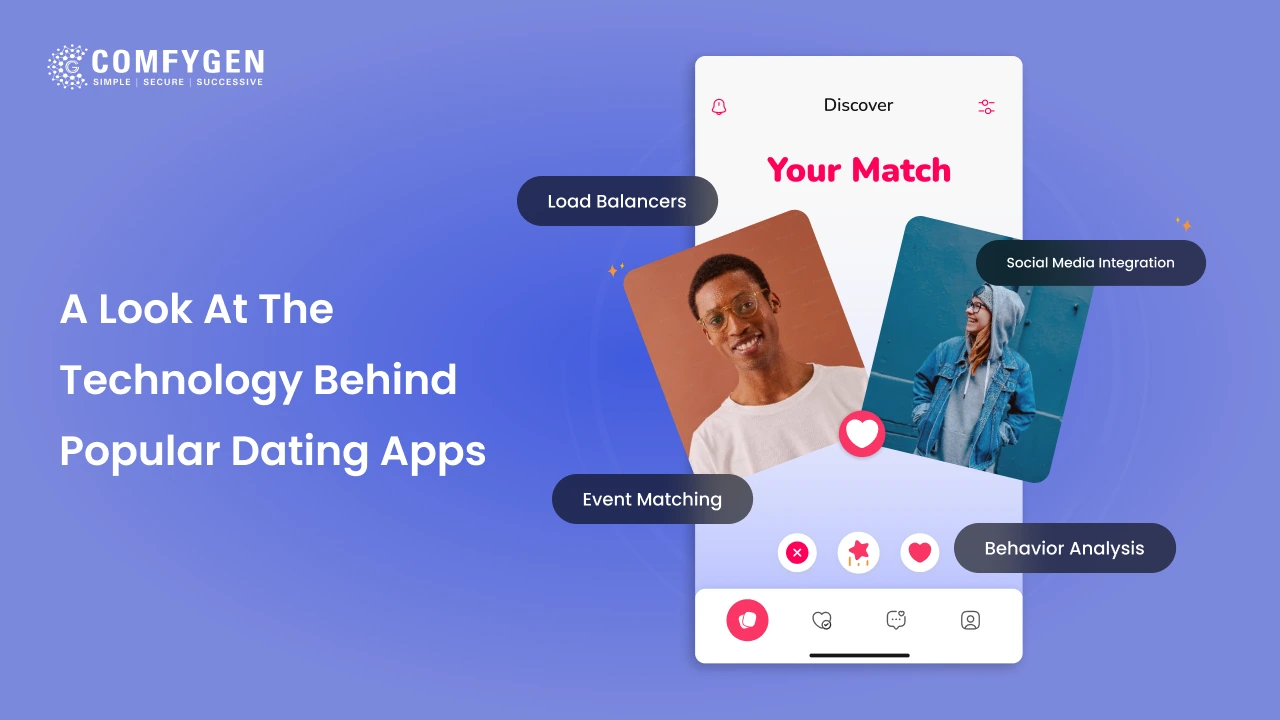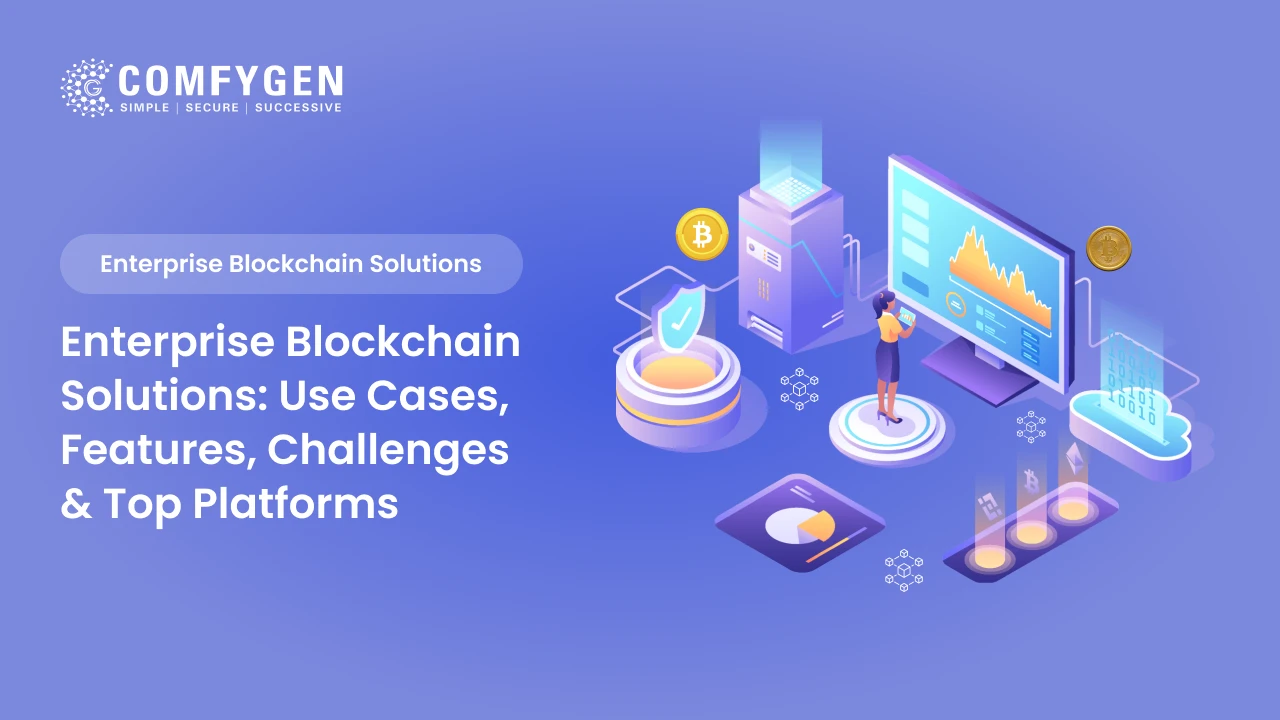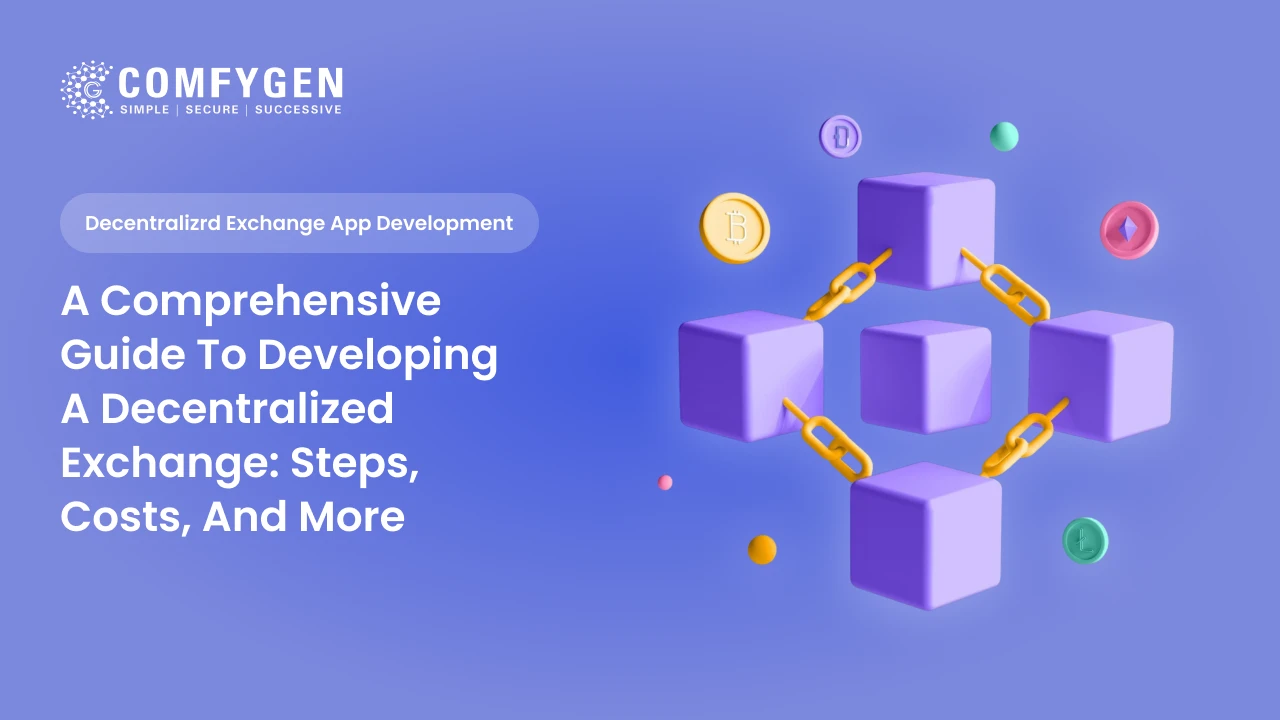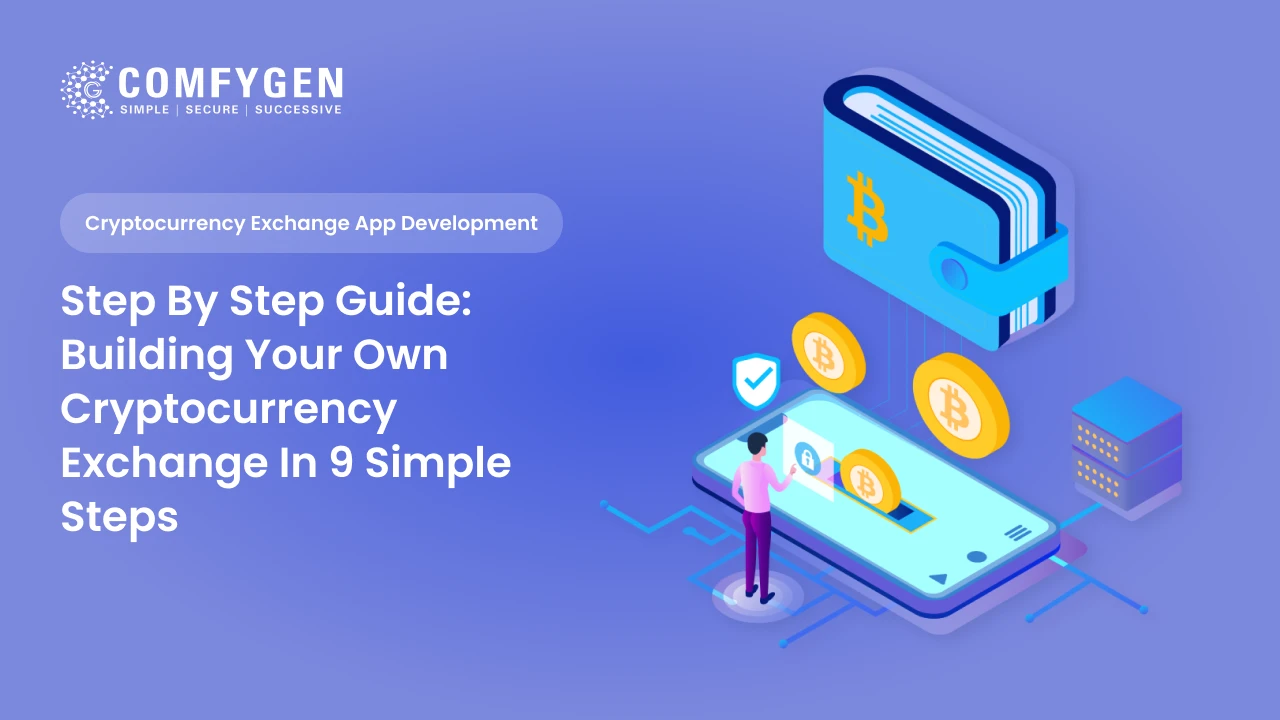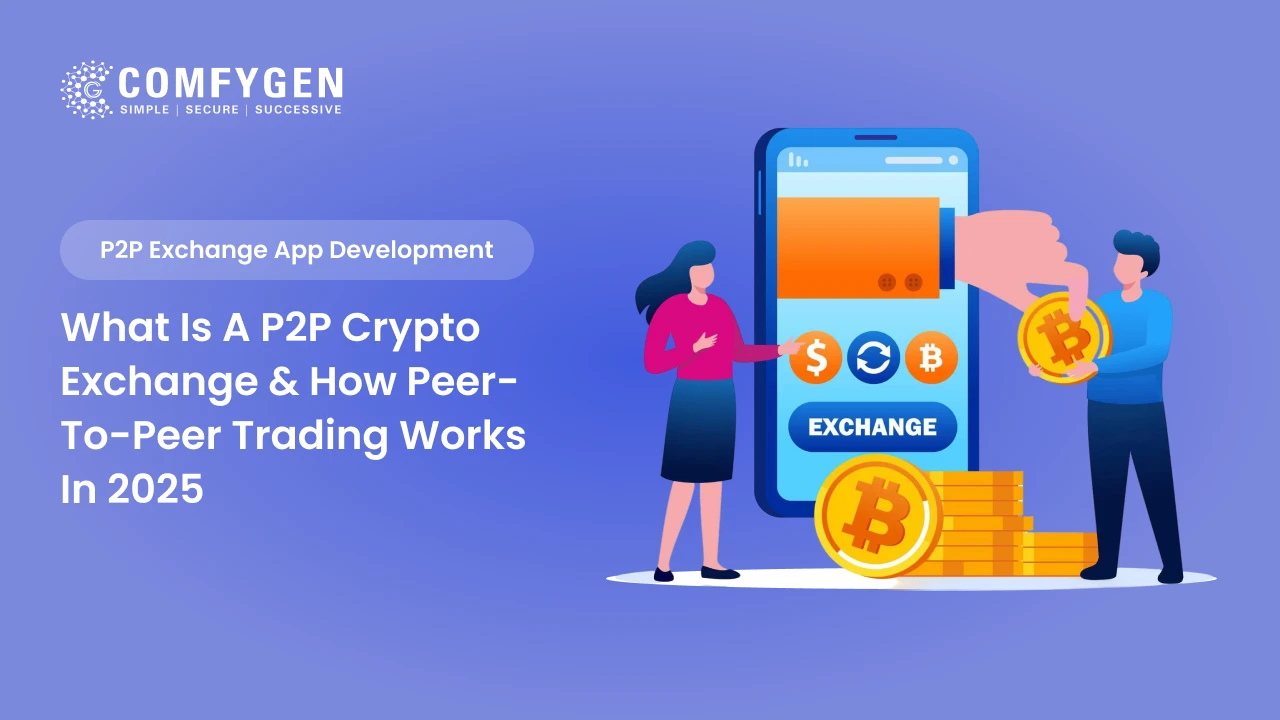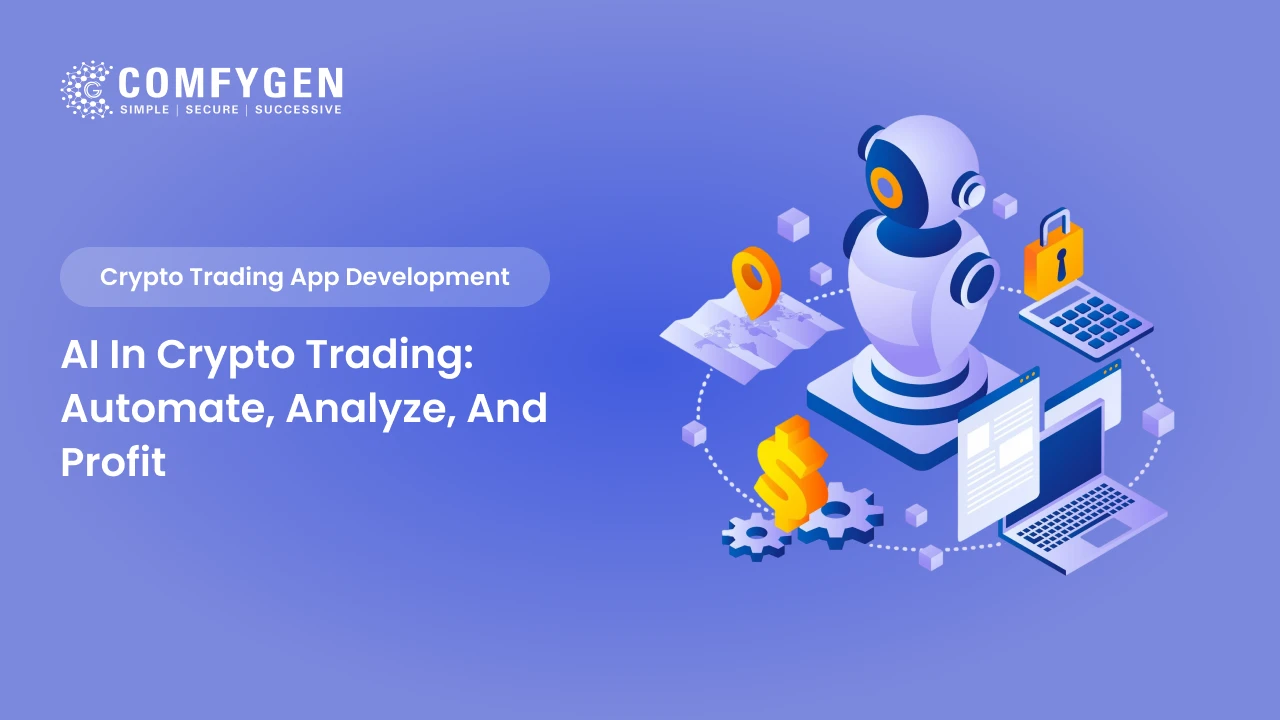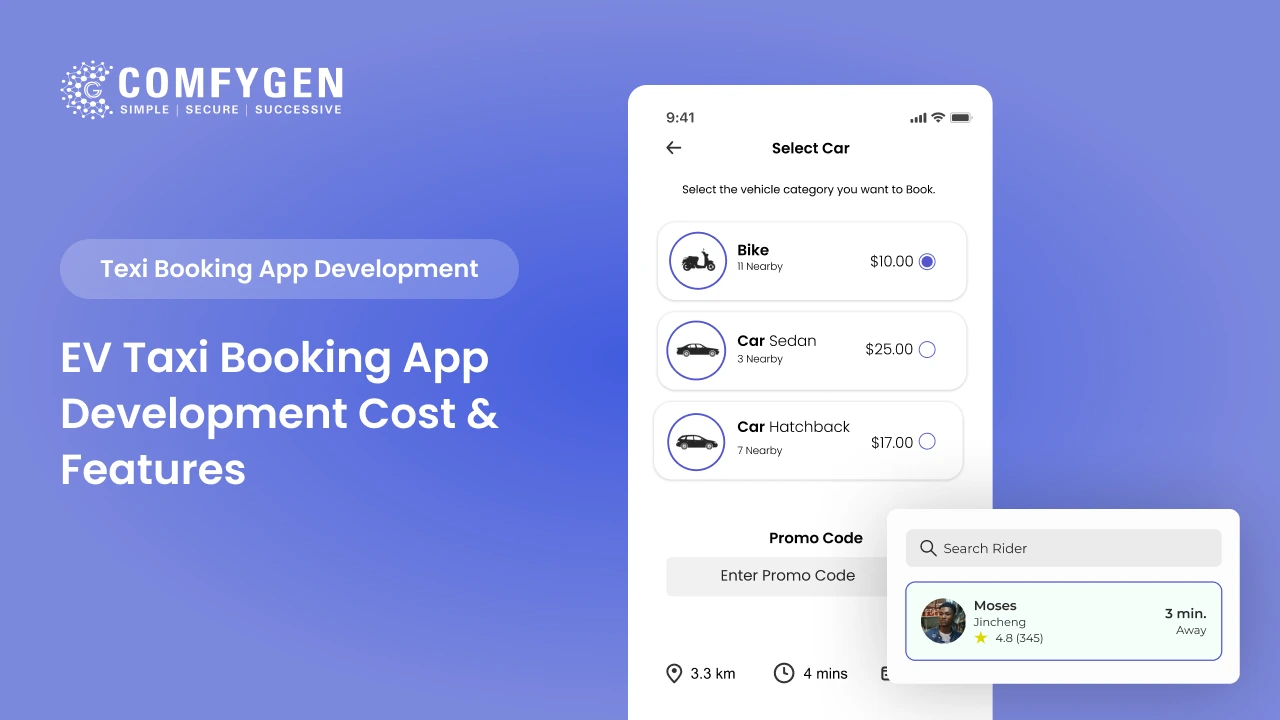A Guide to the Tech Stack for Dating Apps
Developing a dating apps that engages users and provides meaningful relationships is quite an achievement. A key factor in its success is the technology stack (tech stack) employed during the development process. So, what precisely is a tech stack, and what makes it so important for dating applications? Let’s explore the basics and explore how the tech stack contributes to creating a smooth user experience.
The process covers matching algorithms, engaging interfaces, and strong backend systems when considering how dating apps work. These elements are driven by the tech stack, the mix of programming languages, frameworks, tools, and technologies utilized to create the application. The appropriate tech stack guarantees that your app is not only operational but also scalable, secure, and able to accommodate user requests.
Dating applications depend significantly on algorithms to connect users. These dating app algorithms analyze extensive data, like location, preferences, and behaviors—to recommend suitable matches. For example, Tinder uses a blend of AI and machine learning to tailor the user experience, making it essential to utilize technology efficiently when developing your app. This is where understanding the results of some dating app matches can assist in deciding features, as you can integrate user feedback into future changes of the app.
Elements of the Tech Stack for Dating Apps
Building a dating app involves various elements, each requiring a specific set of technologies. Here’s a breakdown of the essential components:
1. Frontend Development
The frontend is what users interact with directly. It includes the design, buttons, swipes, and animations that make the app visually engaging. For dating app development, frameworks like React Native and Flutter are popular choices. These allow developers to create cross-platform apps efficiently, ensuring a consistent user experience on both iOS and Android.
For example, consider the simplicity of Tinder’s swipe feature or Bumble’s clean, modern design. Such interfaces are the result of robust frontend frameworks. To optimize user interaction, how dating apps work is intricately linked to how responsive and appealing their frontend design is.
2. Backend Development
The backend is the brain of the app, handling all the complex processes in the background. It manages user data, matchmaking algorithms, and server-side operations. Popular technologies for backend development include Node.js, Python development (with Django or Flask), and Ruby on Rails.
The dating app algorithm plays a significant role here. It uses data to analyze user preferences and behavior, ensuring accurate matchmaking. When users ask, “Do dating apps work?”, the answer often lies in how well the backend processes their data. A strong backend ensures the app runs smoothly, providing reliable matches and secure communication.
3. Database Management
A dating application gathers extensive user information, ranging from profiles to messaging histories. This information must be stored safely and accessed rapidly when required. Databases such as MongoDB, PostgreSQL, and Firebase are frequently utilized for their effectiveness and ability to scale.
For example, when users look for possible matches, the app pulls information from its database nearly instantly. This smooth experience highlights the significance of an efficient database in dating app development.
4. Matching Algorithms
The core of every dating application is its matching algorithm. By employing AI and machine learning, the algorithm examines user preferences, behaviors, and feedback to propose possible matches. Understanding how do dating app algorithms work is essential for creating a competitive app.
Machine learning models can also predict user preferences over time, improving match quality. For example, dating apps like Tinder/eHarmony focus on long-term compatibility using detailed questionnaires and behavioral data. Incorporating these algorithms effectively demonstrates the use of technology in dating apps and enhances the overall user experience.
5. Security and Authentication
User safety is paramount in dating apps. Secure login methods (like two-factor authentication), data encryption, and robust verification processes are essential. Technologies like OAuth and HTTPS protocols are used to protect user information.
When considering how dating apps work, a secure environment builds trust and encourages users to interact freely. Without proper security measures, users may hesitate to share personal details, which can affect the app’s success.
6. Real-Time Communication
A good dating app allows users to chat in real-time, making conversations seamless and engaging. For this, WebSocket technologies or APIs like Twilio and Sendbird are often employed. These tools enable instant messaging, video calls, and even in-app notifications, enhancing the user experience.
7. Third-Party Integrations
Dating apps often connect with outside services such as social media platforms, payment processors, and location-based APIs. For example, allowing users to sign in through Facebook or Google makes account setup easier and enhances convenience. Incorporating location-based APIs assists in recommending nearby matches, a feature commonly utilized in applications such as Happn.
8. Analytics Tools
To improve the app over time, developers need to track user behavior. Tools like Google Analytics and Firebase provide valuable insights into user engagement, helping optimize features and resolve pain points. For instance, analyzing results of some dating app matches can reveal patterns and preferences, allowing for continuous improvement of the app’s algorithm.
9. Cloud Hosting Services
Scalability and reliability depend on where the app is hosted. Cloud platforms such as AWS, Google Cloud, and Microsoft Azure guarantee that the application can manage heavy traffic without sacrificing performance. Utilizing a dependable cloud platform for hosting provides an additional level of security for user data.
10. Testing Frameworks
Ultimately, testing frameworks are crucial to guarantee the app operates seamlessly on various devices and situations. Tools such as Selenium and Appium enable developers to evaluate the application’s performance, usability, and security.
Tech Stack Behind Popular Dating Apps
Learning from industry leaders provides valuable insights into effective tech stack choices. Let’s explore the technology behind some well-known dating apps:
| App | Front-End | Back-End | Algorithm | Key Features |
| Tinder | React Native | Node.js, MongoDB | Elo Algorithm-based ranking system to determine match suggestions | Swipe-based UI, geolocation matching, push notifications |
| Bumble | Flutter | Google Cloud Platform (GCP) | Preferences-based matchmaking and AI-driven suggestions | Women-first messaging, video chats, interest-based filters |
| Badoo | Native Android/iOS | PHP, MySQL | Machine learning to analyze user behavior and preferences | Profile verification, live video chats, geolocation-based matching |
| Hinge | React Native | Python, PostgresQL | “Designed to be deleted” algorithm prioritizing compatibility and interaction quality | Prompts for detailed profiles, video stories, data-driven match suggestions |
| OkCupid | Native Android/iOS | Python, MySQL | Compatibility quizzes and interest analysis to enhance matching | Detailed profiles, questions for better matches, privacy controls |
| Plenty of Fish | Native Android/iOS | ASP.NET, SQL Server | Behavior-based matching using questionnaires and activity data | Advanced search options, compatibility tests, video streaming |
| Grindr | Native Android/iOS | Python, Firebase | Geolocation and interest-based algorithm | Real-time chat, location-based matching, inclusive identity options |
| Coffee Meets Bagel | Native Android/iOS | Ruby on Rails, MongoDB | Quality-focused algorithm sending curated match suggestions based on shared interests | Limited daily matches, in-depth profiles, icebreaker suggestions |
| eHarmony | Native Android/iOS | Java, AWS | Compatibility matching system (CMS) analyzing behavior and personality | Comprehensive personality tests, video calls, highly filtered match options |
| HER | React Native | Node.js, Firebase | Community and interest-based algorithm | LGBTQ+ focus, group chats, events calendar, location-based matching |
Key Insights:
- Tinder, Bumble, and Hinge rely on React Native or Flutter for seamless cross-platform performance.
- OkCupid, Plenty of Fish, and eHarmony use extensive user data and behavioral analysis for compatibility-focused algorithms.
- Dating Apps like Grindr and HER prioritize community-building features alongside their matchmaking services.
- Cloud services like AWS, Firebase, and GCP provide reliable scalability for these apps.
The choice of the tech stack and algorithm depends on the app’s focus—whether it’s swiping, compatibility, or community features. Each app’s stack is tailored to meet user expectations while ensuring security, scalability, and a polished user experience.
Importance of a Right Tech Stack in Dating App Development
Selecting the appropriate technology stack is among the most important choices for dating app developers. It has a direct impact on the app’s performance, scalability, and user satisfaction. Let’s explore why this decision is so crucial:
1. Performance
A robust tech stack ensures that your dating app operates smoothly, even under heavy traffic. Fast load times, minimal lags, and responsive designs are essential for keeping users engaged. Slow performance can lead to user frustration, which can harm retention rates. This is especially important considering how dating apps work, with real-time interactions like swiping and messaging requiring seamless performance.
2. Scalability
As your application becomes more popular, it should manage a rising number of users and engagements. A scalable technology stack, such as AWS or Google Cloud Platform, guarantees that the application can expand with its user base without experiencing crashes or interruptions. Scalability is crucial for applications seeking lasting success, as evidenced by the outcomes of various dating app matches, where a robust active user base is vital for the app’s matchmaking efficiency.
3. User Engagement
An intuitive and visually appealing front-end framework, such as React Native or Flutter, enhances user experience. These technologies ensure the app is easy to navigate, keeping users engaged longer. Since dating app algorithms often rely on user activity for effective matchmaking, a user-friendly interface contributes directly to the app’s success.
4. Cost-Efficiency
The right tech stack minimizes development time and ongoing maintenance costs. Open-source frameworks and tools can save money during initial development, while efficient backend technologies reduce server costs over time. This allows resources to be redirected towards marketing and user acquisition, ensuring that the app reaches a wider audience.
5. Security
Dating apps deal with sensitive user data, including personal details, preferences, and communication history. A secure tech stack with robust encryption and authentication frameworks ensures that this data is protected. This not only builds trust but also ensures compliance with global privacy regulations like GDPR. As users ask, “does dating apps work?”, trust in data security often influences their choice.
6. Algorithm Effectiveness
The tech stack you choose determines how efficiently the dating app algorithm works. For instance, a powerful backend framework like Django or Node.js can support complex algorithms that match users based on preferences, behavior, and compatibility. Understanding how dating apps work and implementing advanced matchmaking systems can set your app apart in the competitive market.
7. Real-Time Features
Dating apps rely heavily on real-time functionalities, such as instant messaging, swiping, and notifications. A tech stack with WebSocket support or APIs like Twilio ensures these features work seamlessly. Real-time engagement plays a crucial role in enhancing the user experience and ensuring that users stay active on the platform.
8. Cross-Platform Compatibility
Using frameworks like Flutter or React Native allows dating app developers to create dating apps for both Android and iOS with a single codebase. This not only reduces development time but also ensures consistent performance and design across platforms. As users interact with different devices, cross-platform compatibility becomes essential for a dating app development company which is aiming to maximize reach.
9. Customizability
A versatile technology stack allows mobile app developers to tailor the application according to changing market app trends DesignRush and user input. Whether incorporating AI-powered recommendations or utilizing blockchain technology in dating apps for improved privacy, a thoughtfully selected tech stack enables straightforward upgrades and the addition of new features. This flexibility is vital for maintaining a competitive edge in the rapidly changing dating app development industry.
10. Analytics and Insights
The appropriate tech stack enables the incorporation of analytics tools that monitor user behavior, preferences, and engagement rates. These insights are essential for enhancing the app and improving the dating app algorithm. Comprehending how dating app algorithms work and utilizing data-informed approaches can greatly enhance user contentment and matchmaking precision.
Choosing the appropriate technology stack guarantees that your application can fulfill user demands while upholding efficiency, scalability, and security. It creates the foundation of your app’s efficiency and significantly influences its success in the competitive dating app industry.
How to Choose the Correct Tech Stack for a Dating App
Choosing the appropriate technology stack is essential for creating a successful dating application. It ensures that your app is scalable, efficient, and attractive to users. Here is a detailed guide to assist you in making the best choice:
1. Define Your App’s Core Features
The features you want to include decides the technology you’ll need. Essentials like swiping, matching, chatting, and video calls can be supported by frameworks like React Native or Flutter. Advanced functionalities such as AI-driven matchmaking (to improve the dating app algorithm) and blockchain-based identity verification require more sophisticated backend systems like Node.js or Python.
2. Understand Your Audience
Your target demographic influences both design and technology choices. Younger audiences may enjoy gamified experiences, while older users might prioritize ease of use and security. Catering to user preferences directly impacts how dating apps work and how effective the dating app algorithm development will be in retaining users.
3. Plan for Scalability
Your app may start with a small user base, but it should be prepared to grow. Technologies like AWS or Firebase ensure your app can scale efficiently. Scalability is essential for maintaining seamless performance as the results of some dating app matches increase user engagement.
4. Consider Budget Constraints
Your budget highly impacts your tech stack decisions. Open-source frameworks like Flutter development or React Native are affordable yet powerful. Similarly, cloud solutions such as AWS or GCP offer flexible pricing to suit both startups and large-scale enterprises.
5. Consult a Dating App Development Company
Partnering with a dating app development company ensures you have expert guidance. These companies can help you implement cutting-edge features, optimize costs, and streamline the development process. Professional expertise ensures you fully understand how do dating apps work and build an app that thrives in a competitive market.
6. Focus on Security
Security is paramount when dealing with sensitive user data in dating apps. Choose backend systems that support encryption and compliance with data protection regulations like GDPR. Secure technology reassures users, addressing their concerns about privacy while enhancing trust.
7. Test for Cross-Platform Compatibility
Your app should provide a seamless experience across both Android and iOS platforms. Frameworks like Flutter allow developers to write a single codebase that works effectively on multiple platforms, improving cost efficiency and user experience.
8. Prioritize Speed and Performance
High-performing apps retain users by providing quick responses and smooth transitions. A powerful backend like Django combined with optimized front-end frameworks ensures your app handles large volumes of traffic without delays, directly affecting how dating apps work in real-time environments.
Taking these factors into consideration will help you make informed choices that align with your business objectives and user needs. A carefully selected tech stack not only defines how do dating app algorithms work but also ensures that your app provides a smooth and captivating user experience.
Develop a Robust Dating App with Comfygen
Comfygen focuses on developing unique dating applications designed according to your ideas. By concentrating on selecting the appropriate technology stack, we guarantee that your application is scalable, secure, and full of features. With intuitive swiping interfaces, AI-driven matchmaking, and blockchain security, our skilled developers utilize cutting-edge technology to provide outstanding user experiences.
As a reliable dating app development company, we support you in each phase, making certain your app distinguishes itself in a crowded marketplace. Allow Comfygen to assist you in turning your dating app concept into reality with unparalleled skill and commitment.
Conclusion
Understanding the technology that powers dating apps is crucial for developing a successful and interactive app. From front-end design to back-end algorithms, each element of the tech stack is essential for providing a smooth user experience. By analyzing the functionality of dating apps and utilizing information from top apps, you can make informed choices regarding your technology stack.
Whether you’re creating a new application or enhancing a current one, selecting the appropriate technology is crucial for maintaining a competitive edge in the marketplace. Engaging with a trustworthy dating app development company can simplify the process, ensuring that your app fulfills user demands while providing the best outcomes.
By selecting the appropriate tech stack, you will not only develop a strong app but also make meaningful connections for your users, demonstrating that with the correct strategy, dating apps are effective.

Mr. Saddam Husen, (CTO)
Mr. Saddam Husen, CTO at Comfygen, is a renowned Blockchain expert and IT consultant with extensive experience in blockchain development, crypto wallets, DeFi, ICOs, and smart contracts. Passionate about digital transformation, he helps businesses harness blockchain technology’s potential, driving innovation and enhancing IT infrastructure for global success.

